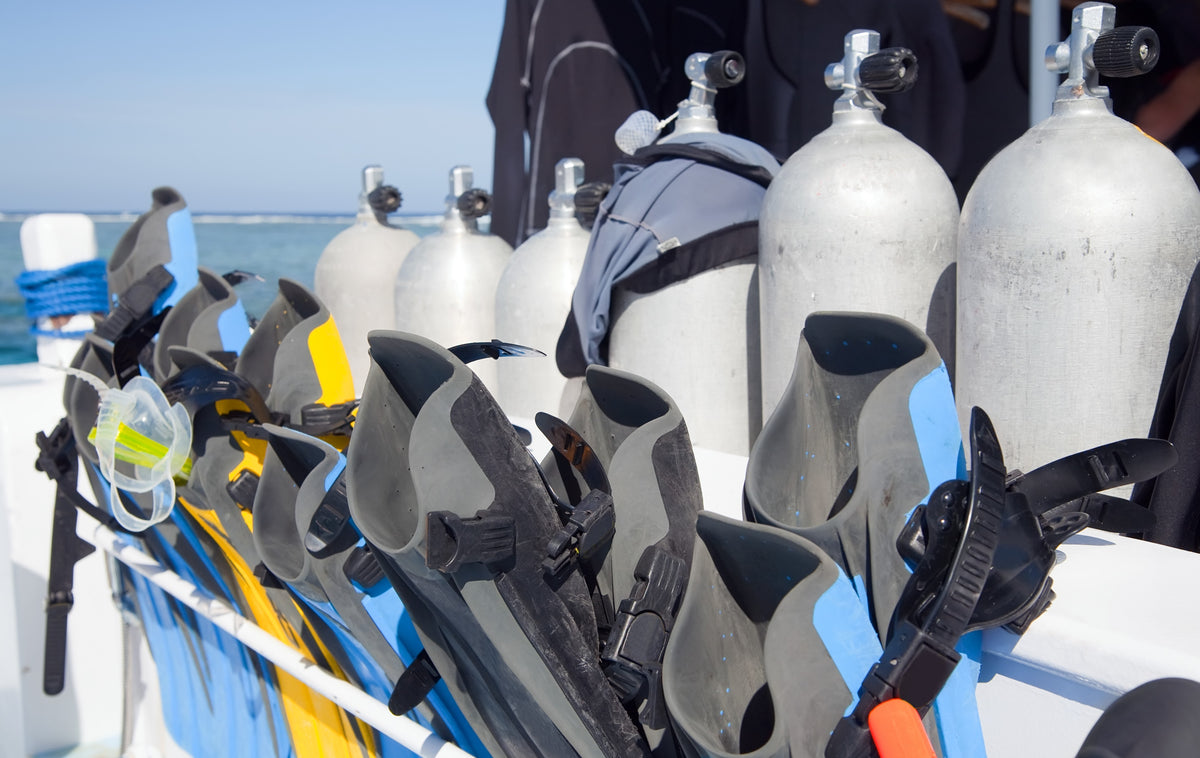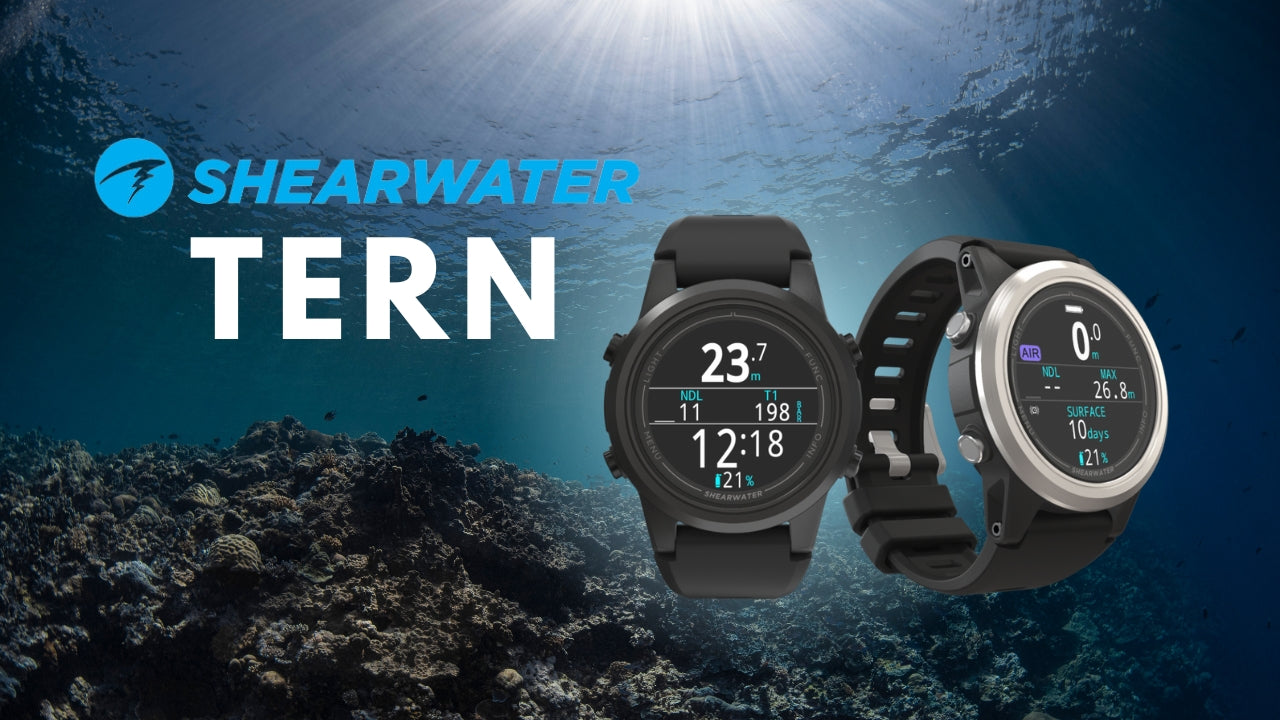Long-Term Dive Gear Storage Guide

Scuba diving is something that’s hard to give up once you’ve tried it - it’s a surreal exhilarating and addictive experience. From time to time, though, either seasonally or due to other circumstances, you may need to put this hobby on hold and pack your gear away for long-term storage. Making sure you store your scuba equipment properly goes a long way towards prolonging its life. So, in this article, we have prepared some recommendations on where to store, and how to pack your gear so that it stays in tip-top shape.
General Considerations
1. Wash and dry your gear before putting it away. Start clean by giving your equipment a good wash in warm fresh water. This will help to remove any chlorine, salt, and sea debris left on your dive gear. You can also use a commercial conditioner to get rid of unwanted odors on your neoprene accessories, buoyancy compensator, and the wetsuit. After you wash everything, make sure that all the materials are completely dry before long-term storage. Let your equipment air-dry in a shaded, well-ventilated area. Never store it wet or damp.
2. Consider having your gear serviced. Some pieces of the scuba gear setup, such as your regulator, BCD, and tank, need to be inspected and serviced by a trained technician on a regular basis (many manufacturers require annual servicing to keep up with the warranty). Taking your gear for the checkup prior to long-term storage is usually a good idea since it allows to remove all internal contaminants before they start breeding and forming hard deposits that can result in compromised future performance and a number of damages. It also makes sense if we’re talking about seasonal storage, late fall and winter are usually quiet for servicing so you won't have to wait long to get your gear back.
If you want to read more about gear servicing, check out this article.
3. Find a suitable place to store your gear. It’s best to store all your equipment in a dry dark well-ventilated place with a steady temperature. Avoid garages and attics though, as these areas are often exposed to dust, mildew, high/low temperatures and chemical or gasoline fumes, which could all be harmful to your gear.
Storing Your Mask and Fins
Store your mask in its original container, this will help to maintain the shape of the mask and its ability to fit properly around your face. In case you don’t have the box it came in, wrap the mask in a piece of cotton cloth or plastic to avoid scratches on the lens. Store your fins flat or with support; do not leave them standing on the tips, as this can distort them. If you still have the plastic inserts that came with your fins, slip them back inside the foot pocket to help keep its shape.
Storing Your Wetsuit and Drysuit
An ideal way to store your wetsuit is to lay it flat and stuff it with loosely rolled towels or other soft material that will act as a cushion and help maintain the shape of the suit. Alternatively, you can hang the suit on a thick coat hanger or a special wetsuit hanger. Do not fold your wetsuit to store it, especially if it remains there for a long time, as this can damage the neoprene and create permanent creases. As for the drysuits, you can either hang them on a thick hanger or keep them loosely rolled with the zip undone. Avoid excessive folding though to prevent the zip from snapping. You should also consider applying some unscented talc to the latex seals to prevent them from sticking together and degrading. Avoid using baby powders or other scented products as these can contain petroleum which will damage the seals.
Storing Your Buoyancy Compensator and Computer
Store your BCDon the hanger and partially inflated. This keeps the bladder walls from sticking to one another. You can also put silicone spray to the outer rubber or silicone pieces of the BCD for prolonged storage.
The best way to store your dive computer is in a hard plastic case. This way it won’t be crushed or scratched. If you don’t have a suitable case, wrap it in a soft cloth or plastic coating. As for the question of whether or not you should remove the batteries before storage, check the manufacturer guidelines, as this will depend on the type of the battery and the computer itself. Either way, make sure to check the batteries before use (preferably in advance).
Storing Your Gauges, Regulator and Hoses
It is best to store regulators and/or gauges in a separate regulator bag or in a sealed plastic bag. All the hoses should be coiled up loosely Never store the regulator while it is connected to the cylinder valve.
Storing Your Dive Knife
Lubricate your dive knife lightly and place it in a dry sheath.
Storing Your Dive Lights and Camera Strobes
Remove the batteries from the torch if you are storing it for a long period - alkaline batteries leak when left unused for long periods of time. If you are using a light with rechargeable batteries, make sure they are fully charged before being stored. O-ring seals should be cleaned, lubricated with silicone grease and inspected each time the light is opened.
Storing Your Scuba Cylinder
For long-term storage, it is best to keep your cylinder in an upright position. Small amounts of moisture that may be present inside the cylinder cause corrosion. If the tank is stored on its side, the corrosion is spread across the thinner sidewall. If the tank is stored upright, the corrosion is focused on the thicker base. With that said, when storing cylinders upright, ensure they are tightly secured to prevent them from being knocked over. You should also avoid storing your tank on bare concrete or any other surfaces that hold moisture. Another thing to keep in mind is that tanks should be stored with a slight positive pressure of around 300 psi (20 bar).
Finally, remember, tanks need to have visual inspections every year and hydrostatic inspections every 5 years, regardless of usage.



![9 Best Dive Computers in 2024 [Reviewed & Updated] - DIPNDIVE](http://dipndive.com/cdn/shop/articles/best_computers2.jpg?v=1658752532)
